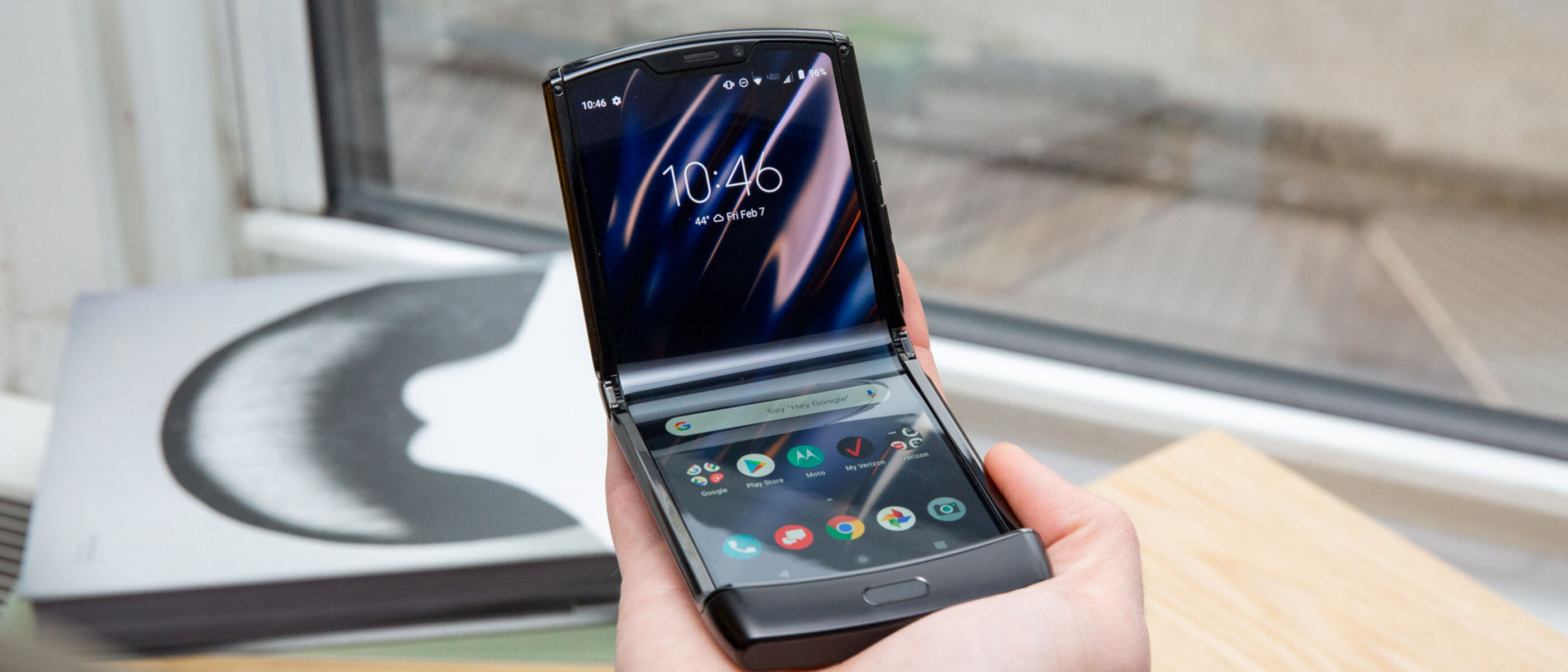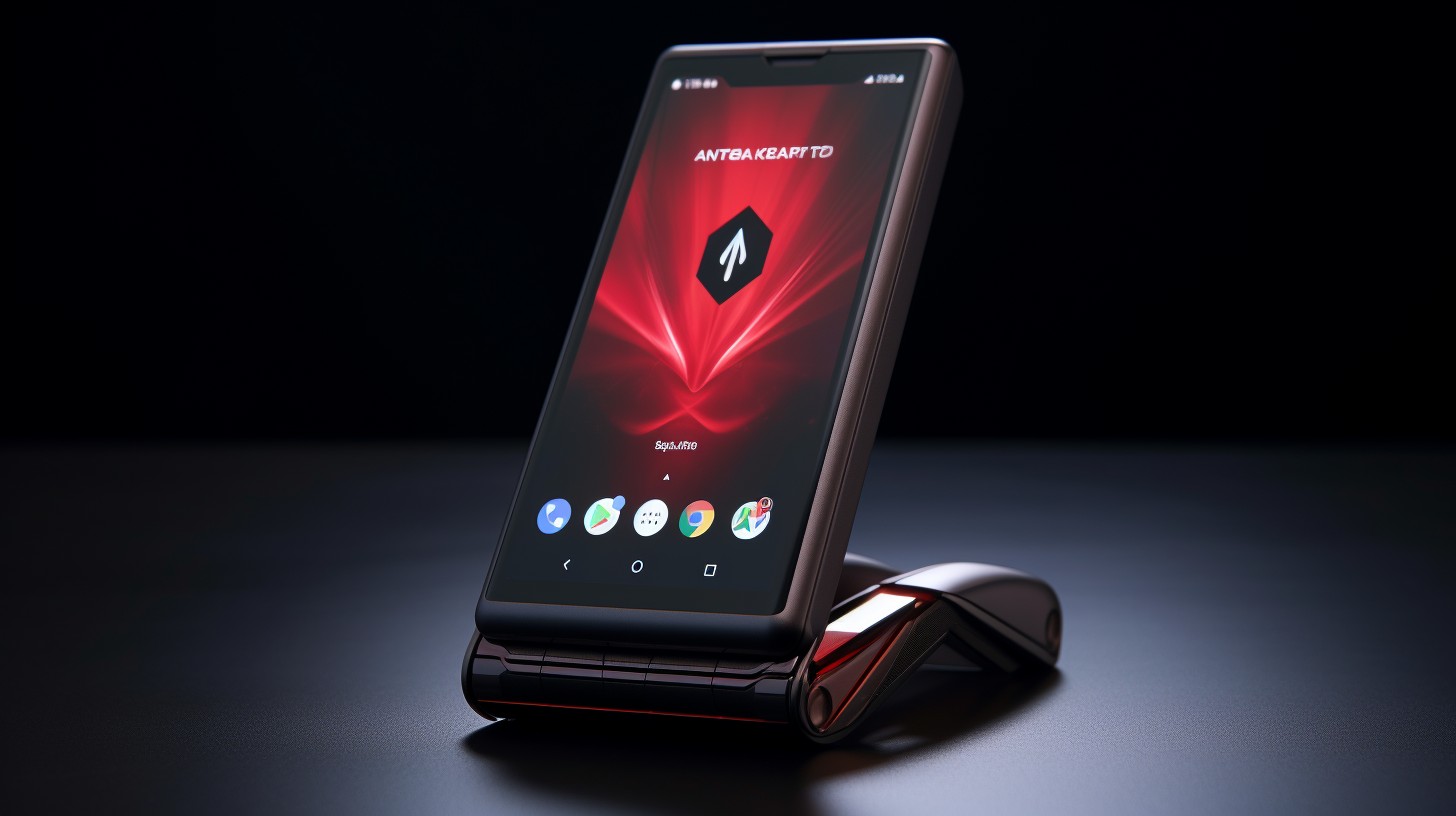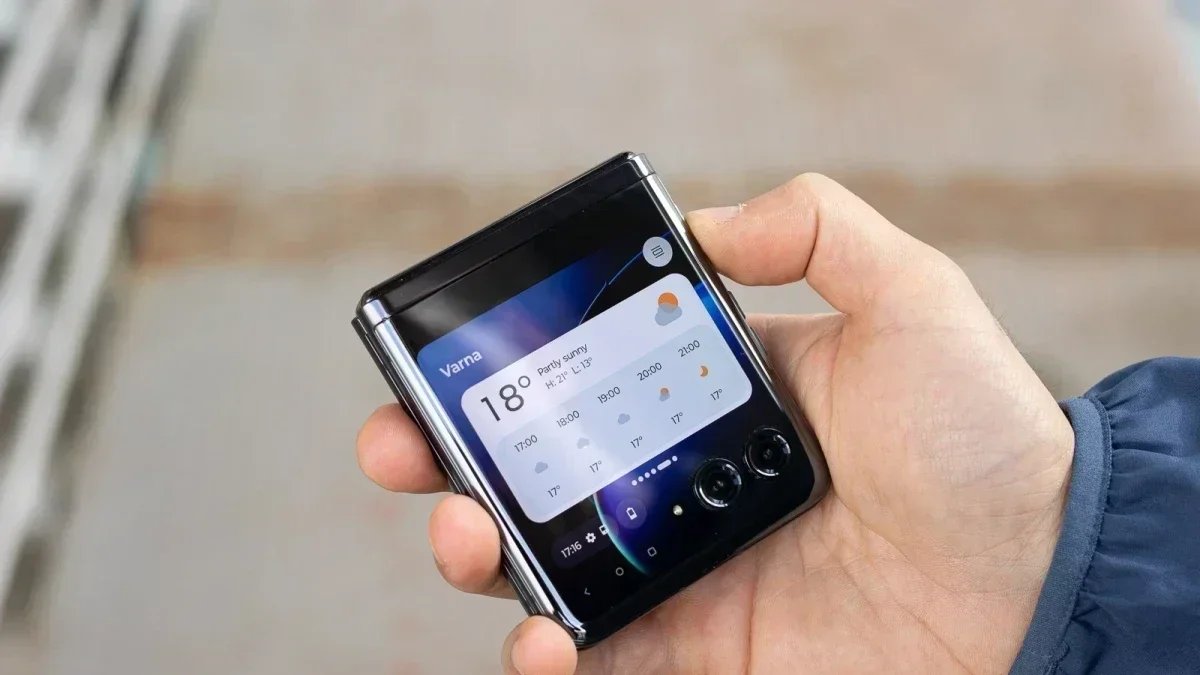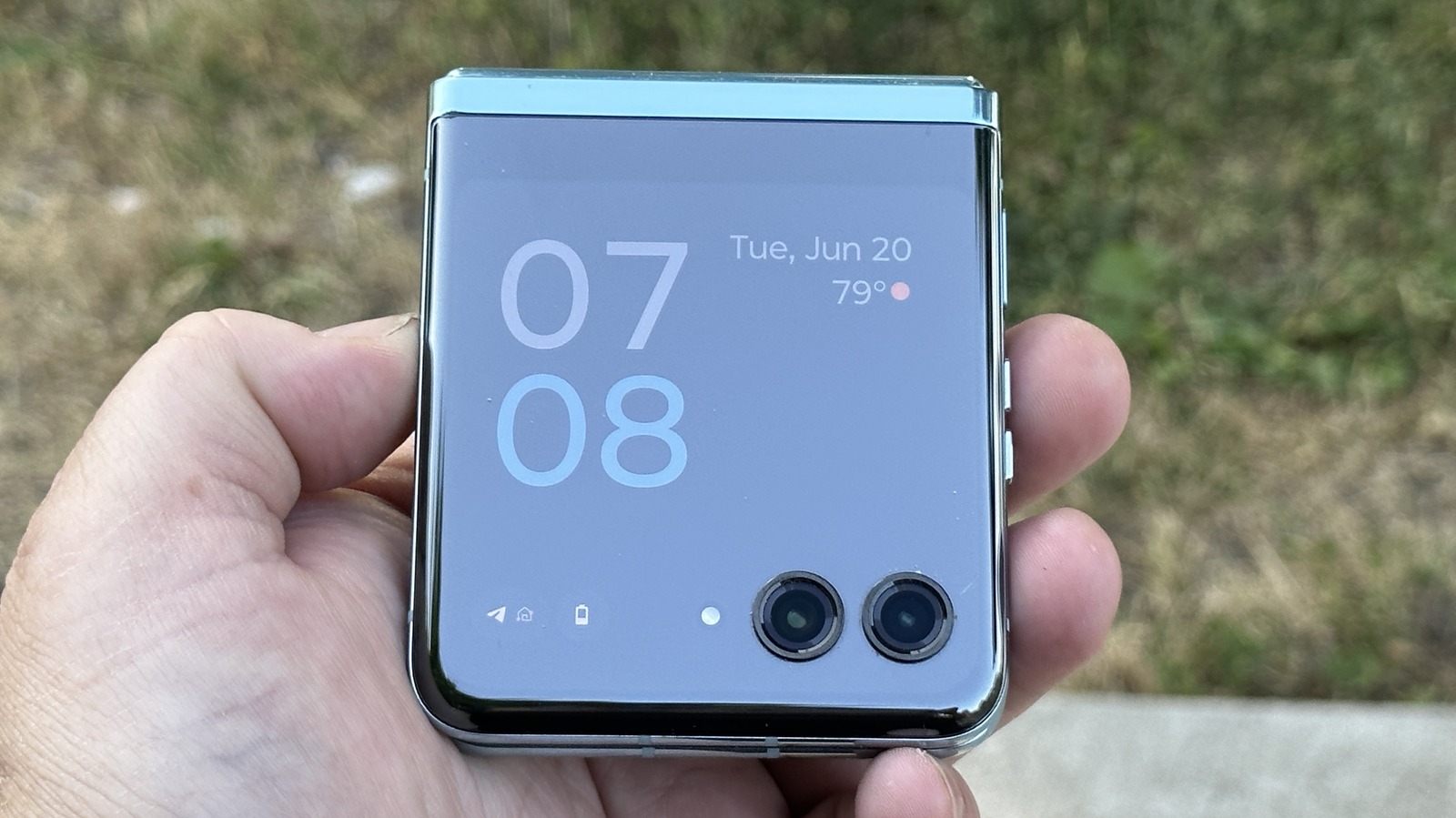Introduction
The Motorola Razr series has been a symbol of innovation and style in the mobile industry. With the release of the new Motorola Razr, it's essential to understand the differences between the various models to make an informed decision. This article will delve into the design, display, camera, performance, and battery disparities among the Motorola Razr models, providing valuable insights for potential buyers.
The evolution of the Motorola Razr series showcases the advancements in mobile technology, offering users a blend of nostalgia and cutting-edge features. By examining the variations in design, display, camera capabilities, performance, and battery life, consumers can gain a comprehensive understanding of the unique attributes of each model. This knowledge empowers individuals to select the Motorola Razr that best aligns with their preferences and requirements.
As we embark on this exploration of the differences in Motorola Razr models, it's important to note that each iteration represents a distinct blend of craftsmanship, functionality, and innovation. By dissecting the nuances in design, display, camera performance, and battery life, we aim to equip readers with the knowledge needed to make an informed choice when considering a Motorola Razr purchase. Let's dive into the details and unravel the distinctive features that set each model apart.
Design Differences
The design of a smartphone is often the first aspect that captures our attention, setting the tone for the overall user experience. When comparing the various models of the Motorola Razr series, it becomes evident that each iteration boasts unique design elements that contribute to its individual charm and functionality.
The original Motorola Razr, with its iconic clamshell design, revolutionized the mobile industry, becoming a timeless symbol of elegance and innovation. Its sleek and compact form factor, coupled with the striking external display, made it a coveted accessory for tech enthusiasts and fashion-forward individuals alike.
In contrast, the new Motorola Razr embraces a modernized approach to design, featuring a foldable display that seamlessly blends nostalgia with contemporary technology. The foldable design not only enhances portability but also introduces a new dimension of interaction, allowing users to unfold a compact device into a full-fledged smartphone experience.
Furthermore, the materials used in the construction of the devices differ across the models. While the original Motorola Razr showcased a robust metal and glass construction, the new iteration incorporates advanced materials to facilitate the foldable display, ensuring durability without compromising on aesthetics.
The placement and integration of the camera module also vary between the models, reflecting the evolution of smartphone photography. The original Motorola Razr featured a single rear camera, discreetly positioned to maintain the device's sleek profile. In contrast, the new Motorola Razr integrates advanced camera technology within the foldable design, offering users enhanced photographic capabilities without sacrificing the device's visual appeal.
Additionally, the color options and finishes available for each model contribute to their distinct design language. The original Motorola Razr offered a range of classic and vibrant color choices, catering to diverse preferences. In contrast, the new Motorola Razr presents a contemporary color palette, complementing its futuristic design and catering to modern aesthetic sensibilities.
In essence, the design differences among the Motorola Razr models encapsulate the evolution of mobile technology, blending iconic elements with innovative features to deliver a captivating user experience. The distinct design language of each model reflects the era in which it was conceived, offering users a glimpse into the evolution of smartphone design and craftsmanship.
Display Differences
The display of a smartphone serves as the window to a world of digital experiences, shaping how users interact with content and navigate the device's interface. When comparing the display differences across the Motorola Razr models, it becomes evident that each iteration offers a unique visual canvas that contributes to the overall user experience.
The original Motorola Razr featured a striking external display, providing users with quick access to notifications, time, and incoming calls without the need to open the device. This secondary display not only added a touch of convenience but also exuded a sense of sophistication, complementing the device's iconic clamshell design. The compact yet vibrant external display of the original Razr served as a hallmark of its functionality and elegance, setting it apart in the mobile landscape.
In contrast, the new Motorola Razr introduces a revolutionary foldable display, redefining the concept of smartphone interaction. The foldable OLED display seamlessly combines nostalgia with innovation, offering users a compact form factor that unfolds into a full-fledged touchscreen experience. This transformative design not only enhances portability but also introduces a new dimension of usability, allowing users to seamlessly transition between a compact mode for quick interactions and an expansive mode for immersive content consumption.
Furthermore, the advancements in display technology are evident in the new Motorola Razr, with the foldable OLED panel delivering vibrant colors, deep contrasts, and sharp details. The flexible display not only adapts to the user's needs but also elevates the visual experience, making it a standout feature of the new Razr model.
Moreover, the aspect ratio and resolution of the displays differ between the models, reflecting the evolution of smartphone display standards. The original Motorola Razr featured a traditional aspect ratio, catering to the prevalent content formats of its time. In contrast, the new Razr embraces a modern aspect ratio, optimizing the display for multimedia consumption and multitasking, catering to contemporary usage patterns.
In essence, the display differences among the Motorola Razr models encapsulate the evolution of smartphone interaction and visual experiences. The transition from a compact external display to a transformative foldable OLED panel represents a leap in display technology, offering users a dynamic and immersive platform for their digital endeavors. The display disparities between the models underscore the evolution of mobile displays, showcasing the convergence of nostalgia and innovation in the Motorola Razr series.
Camera Differences
The camera capabilities of a smartphone play a pivotal role in capturing life's moments with clarity and creativity. When examining the camera differences across the Motorola Razr models, it becomes evident that each iteration offers distinct photographic features tailored to the evolving needs of users.
The original Motorola Razr, renowned for its sleek and compact design, featured a single rear camera that delivered reliable performance for capturing everyday scenes. While the camera specifications of the original Razr may seem modest by today's standards, it excelled in providing users with a straightforward and intuitive photography experience. The single rear camera, strategically positioned to maintain the device's elegant profile, captured moments with a balance of detail and color accuracy, reflecting the era in which it was introduced.
In contrast, the new Motorola Razr embraces advanced camera technology within its foldable design, elevating the photographic capabilities to cater to modern expectations. The new Razr integrates a sophisticated camera system that includes multiple lenses, enabling users to explore a range of photographic styles and perspectives. The incorporation of advanced imaging sensors and computational photography features empowers users to capture stunning landscapes, intricate details, and expressive portraits with remarkable clarity and depth.
Furthermore, the new Razr's camera system leverages cutting-edge software enhancements to deliver an intuitive and versatile photography experience. Features such as AI-powered scene optimization, night mode, and advanced image processing algorithms elevate the new Razr's photographic capabilities, ensuring that users can effortlessly capture stunning images in diverse lighting conditions and scenarios.
The evolution of smartphone photography is also reflected in the video recording capabilities of the new Motorola Razr, which offers users the ability to capture cinematic moments with enhanced stability and clarity. The integration of advanced video stabilization technology and high-resolution recording capabilities empowers users to unleash their creativity and capture memorable moments in stunning detail.
In essence, the camera differences among the Motorola Razr models underscore the evolution of smartphone photography, showcasing the transition from a single rear camera to a sophisticated multi-lens system with advanced imaging capabilities. The new Razr's camera enhancements represent a fusion of art and technology, empowering users to unleash their creativity and capture life's moments with unparalleled clarity and expression.
Performance Differences
The performance of a smartphone encompasses its processing power, multitasking capabilities, and overall responsiveness, shaping the user experience in navigating apps, gaming, and productivity tasks. When comparing the performance differences across the Motorola Razr models, it becomes evident that each iteration offers distinct enhancements tailored to meet the evolving demands of users.
The original Motorola Razr, characterized by its iconic clamshell design, featured a processor and system memory optimized for the prevalent usage patterns of its era. While it delivered reliable performance for everyday tasks such as messaging, web browsing, and basic app usage, its processing capabilities were tailored to the software and hardware standards of its time. The original Razr's performance, while commendable for its era, may exhibit limitations when handling resource-intensive applications and multitasking scenarios prevalent in contemporary smartphone usage.
In contrast, the new Motorola Razr introduces a significant leap in performance, leveraging advanced hardware and software optimizations to deliver a seamless and responsive user experience. The new Razr integrates a powerful processor, enhanced system memory, and optimized software to cater to modern multitasking demands, gaming experiences, and productivity workflows. The advancements in processing power and memory management empower users to effortlessly navigate resource-intensive applications, switch between tasks seamlessly, and indulge in immersive gaming experiences without compromise.
Moreover, the new Razr's performance enhancements extend to its connectivity capabilities, leveraging advanced networking technologies to deliver faster download and upload speeds, seamless streaming experiences, and reliable connectivity in diverse environments. The integration of advanced wireless technologies ensures that users can stay connected, stream content, and engage in online activities with enhanced speed and stability, reflecting the evolving connectivity standards of the digital era.
Furthermore, the new Razr's software optimizations and user interface enhancements contribute to its overall performance, ensuring that users experience fluid navigation, swift app launches, and efficient multitasking. The seamless integration of hardware and software optimizations elevates the new Razr's performance, delivering a responsive and intuitive user experience that aligns with modern usage patterns and expectations.
In essence, the performance differences among the Motorola Razr models underscore the evolution of smartphone processing power, multitasking capabilities, and connectivity standards. The transition from optimized performance for traditional usage patterns to advanced processing power tailored to modern demands reflects Motorola's commitment to delivering a responsive and immersive user experience in the new Razr model.
Battery Differences
The battery life of a smartphone is a critical aspect that directly impacts the user's daily usage and overall satisfaction with the device. When examining the battery differences across the Motorola Razr models, it becomes evident that each iteration offers distinct enhancements tailored to meet the evolving demands of users.
The original Motorola Razr, known for its iconic design and compact form factor, featured a battery optimized for the prevalent usage patterns of its time. The device's power management and battery capacity were engineered to deliver reliable performance throughout a typical day of usage, encompassing calls, messaging, and light app usage. While the original Razr's battery life met the expectations of its era, the evolving usage patterns and demands of modern smartphone users may necessitate a more robust battery solution.
In contrast, the new Motorola Razr introduces significant advancements in battery technology, catering to the enhanced capabilities and usage patterns of contemporary users. The new Razr integrates a high-capacity battery that ensures prolonged usage without compromising on the device's sleek and foldable design. The optimization of power consumption, coupled with the efficient utilization of resources, enables the new Razr to deliver extended battery life, catering to the diverse needs of users who rely on their smartphones for multitasking, multimedia consumption, and productivity tasks.
Furthermore, the new Razr's battery management features and software optimizations contribute to its overall efficiency, ensuring that users experience prolonged usage without sacrificing performance. The integration of adaptive battery management algorithms and power-saving modes empowers users to maximize their device's uptime, allowing them to stay connected and productive throughout their day without the constant need for recharging.
Moreover, the new Razr's fast-charging capabilities enable users to quickly replenish the device's battery, ensuring that they can swiftly resume their activities without prolonged downtime. The integration of advanced charging technologies reflects Motorola's commitment to delivering a seamless and reliable charging experience, aligning with the fast-paced lifestyles of modern users.
In essence, the battery differences among the Motorola Razr models underscore the evolution of smartphone power management and endurance, showcasing the transition from optimized battery life for traditional usage patterns to advanced battery solutions tailored to modern demands. The new Razr's extended battery life and efficient power management reflect Motorola's dedication to providing users with a reliable and enduring mobile experience.
Conclusion
In conclusion, the Motorola Razr series represents a journey of innovation, design evolution, and technological advancement. The differences among the various models encapsulate the dynamic shifts in mobile technology, catering to the diverse needs and preferences of users across different eras.
The design disparities among the Motorola Razr models reflect the evolution of smartphone aesthetics, from the iconic clamshell design of the original Razr to the transformative foldable form factor of the new iteration. Each design approach embodies a distinct blend of nostalgia and modernity, offering users a unique visual and tactile experience.
The display variances across the models underscore the evolution of smartphone interaction and visual experiences. The transition from a compact external display to a transformative foldable OLED panel represents a leap in display technology, offering users a dynamic and immersive platform for their digital endeavors.
The camera differences among the Motorola Razr models highlight the evolution of smartphone photography, showcasing the transition from a single rear camera to a sophisticated multi-lens system with advanced imaging capabilities. The new Razr's camera enhancements represent a fusion of art and technology, empowering users to capture life's moments with unparalleled clarity and expression.
The performance disparities across the models underscore the evolution of smartphone processing power, multitasking capabilities, and connectivity standards. The transition from optimized performance for traditional usage patterns to advanced processing power tailored to modern demands reflects Motorola's commitment to delivering a responsive and immersive user experience in the new Razr model.
The battery differences among the Motorola Razr models underscore the evolution of smartphone power management and endurance, showcasing the transition from optimized battery life for traditional usage patterns to advanced battery solutions tailored to modern demands. The new Razr's extended battery life and efficient power management reflect Motorola's dedication to providing users with a reliable and enduring mobile experience.
In essence, the differences among the Motorola Razr models represent a tapestry of innovation, craftsmanship, and user-centric design. Whether one is drawn to the timeless elegance of the original Razr or the cutting-edge features of the new iteration, each model offers a distinct and captivating mobile experience, reflecting the spirit of technological evolution and user empowerment.

























